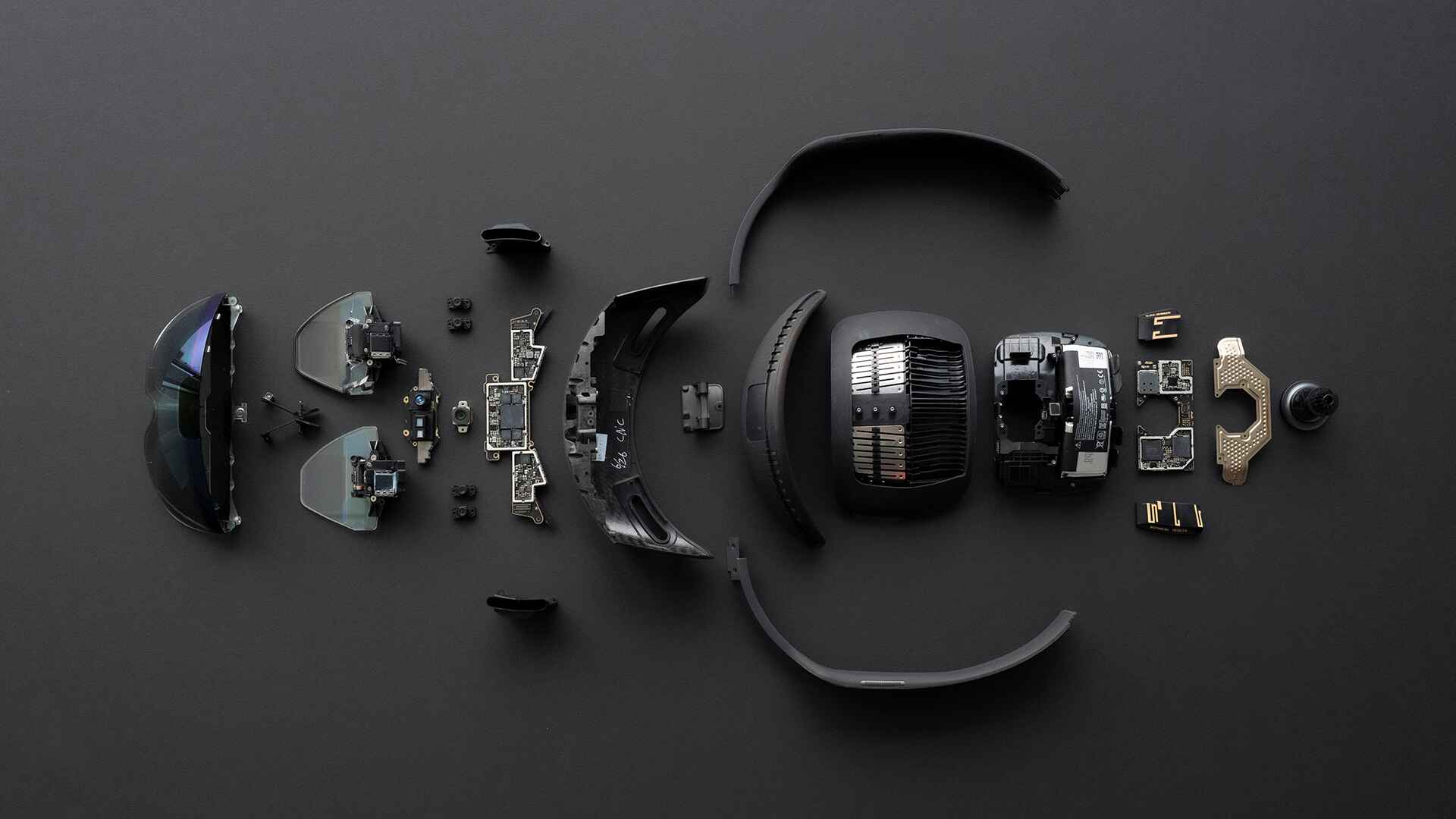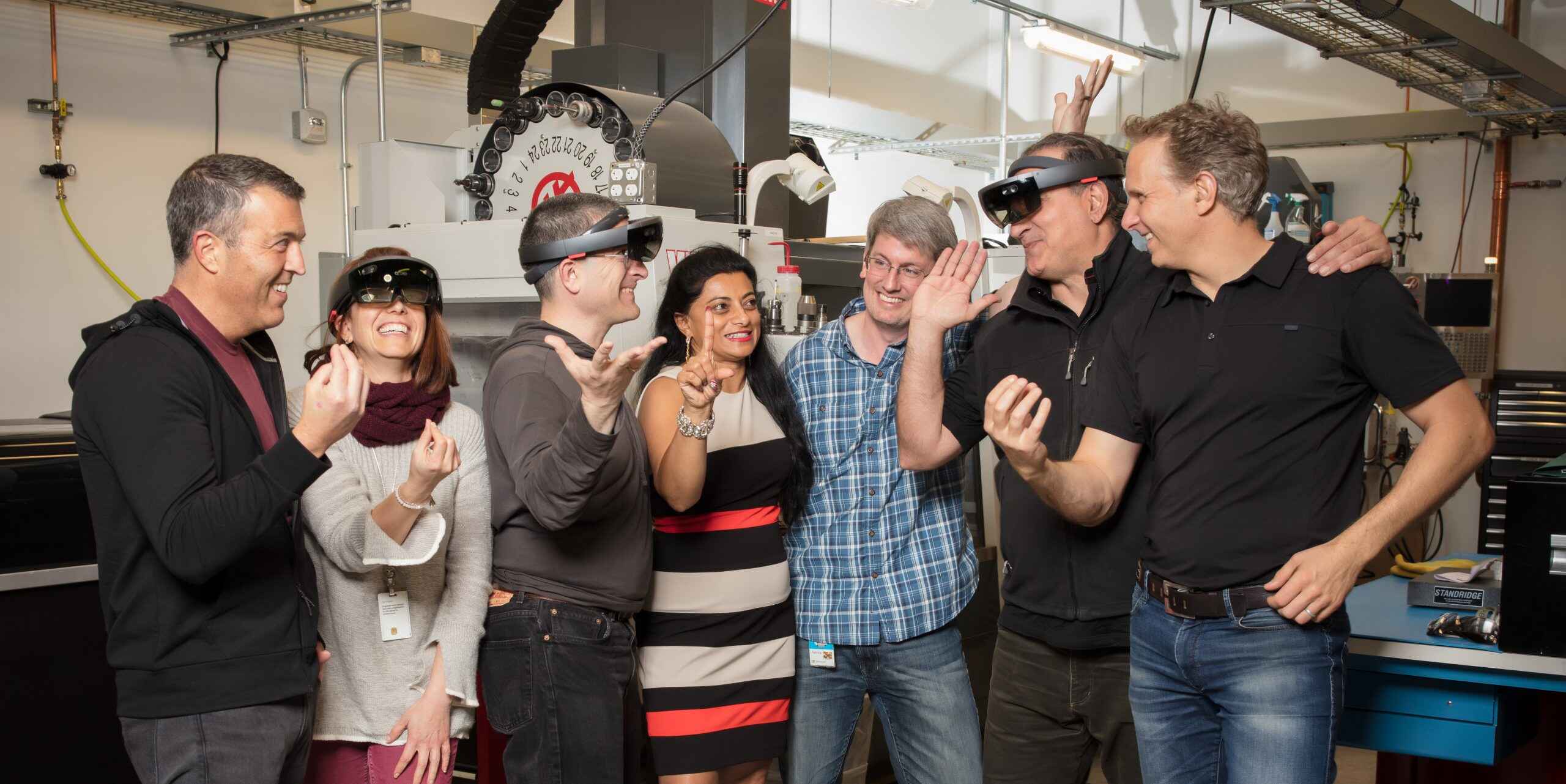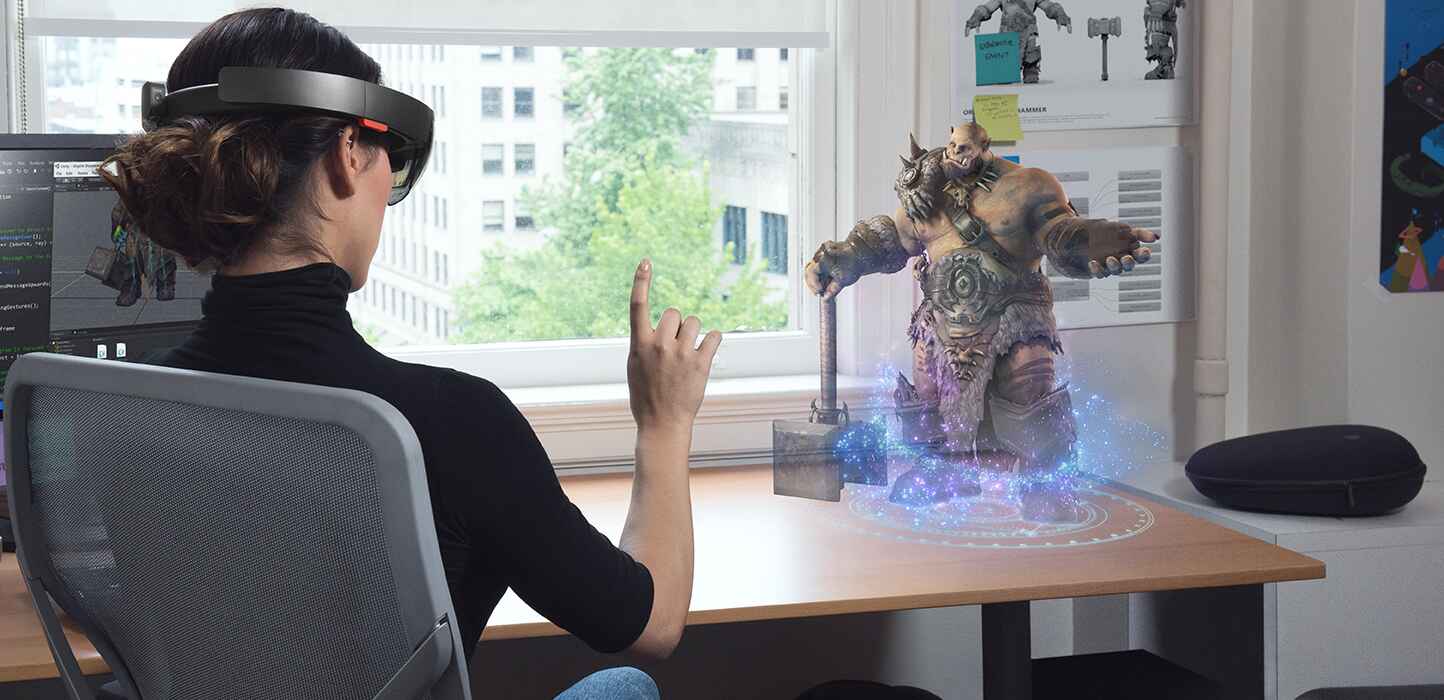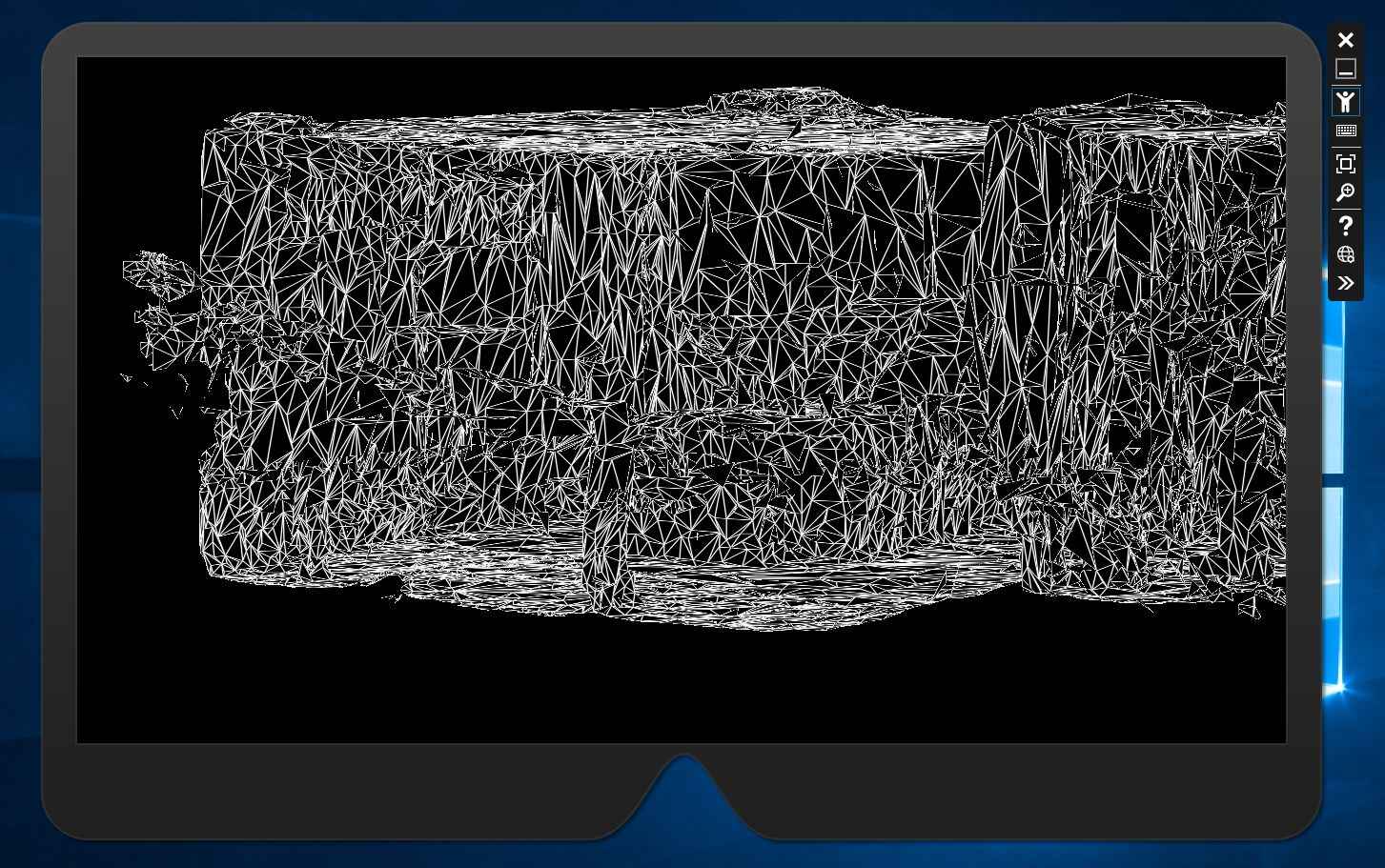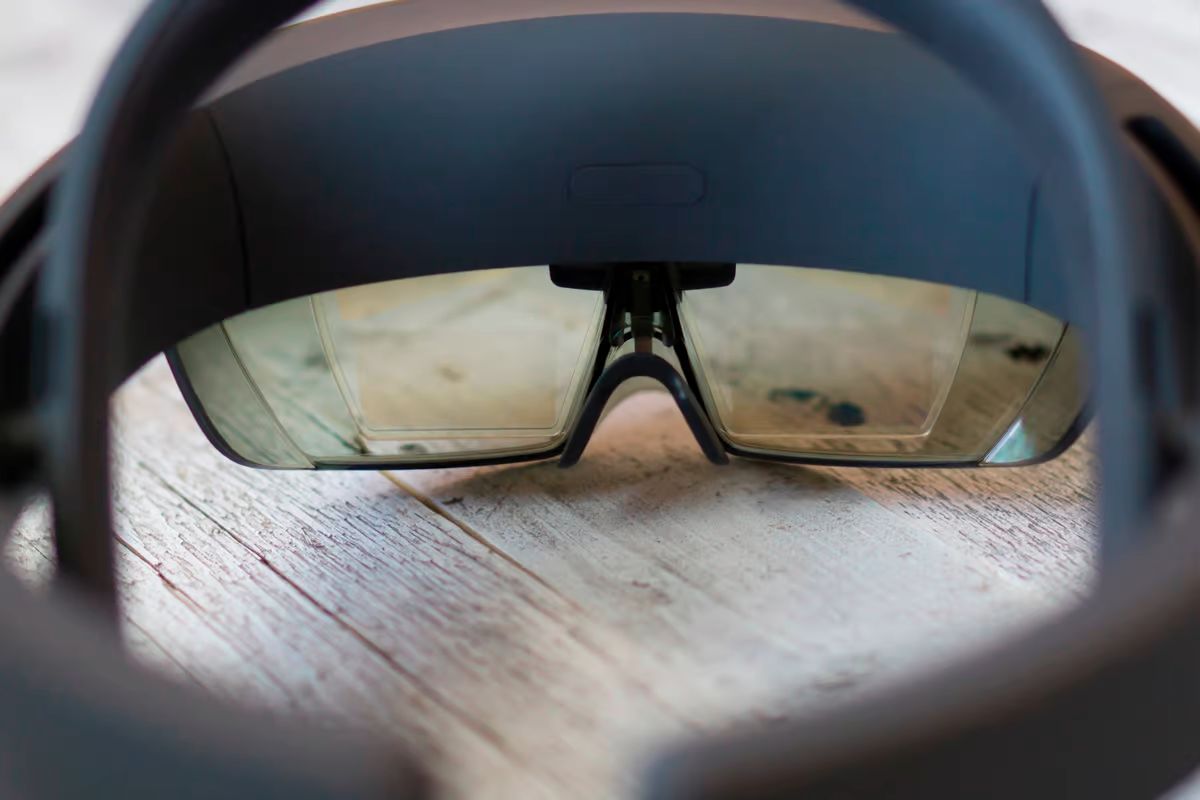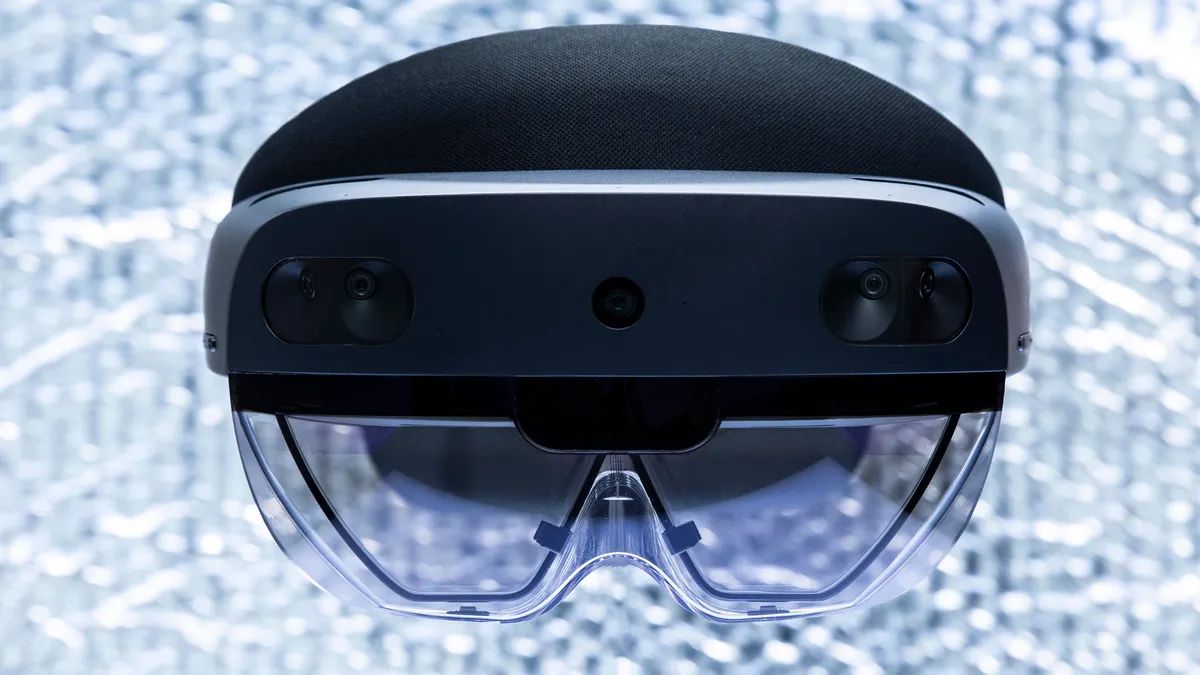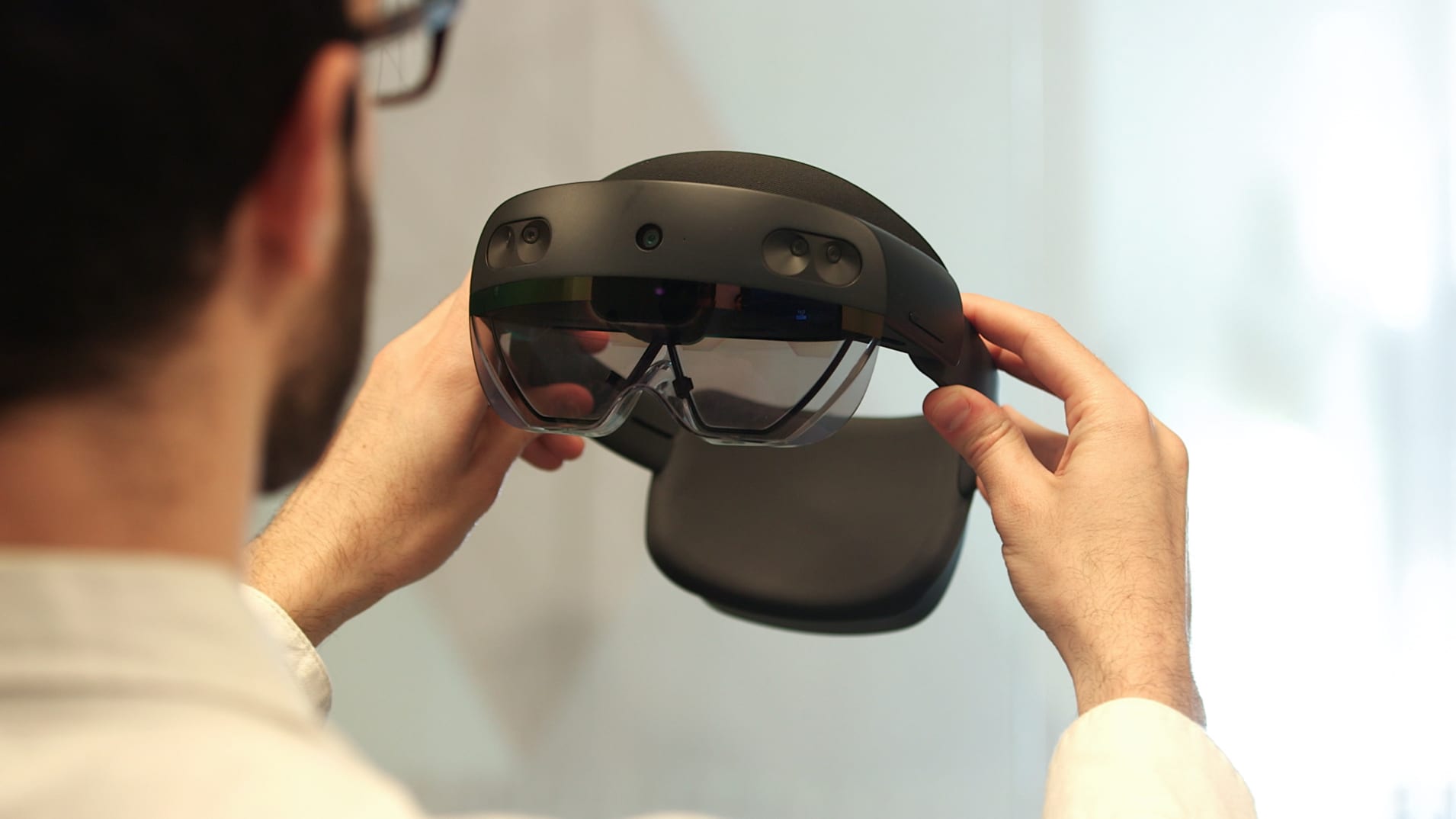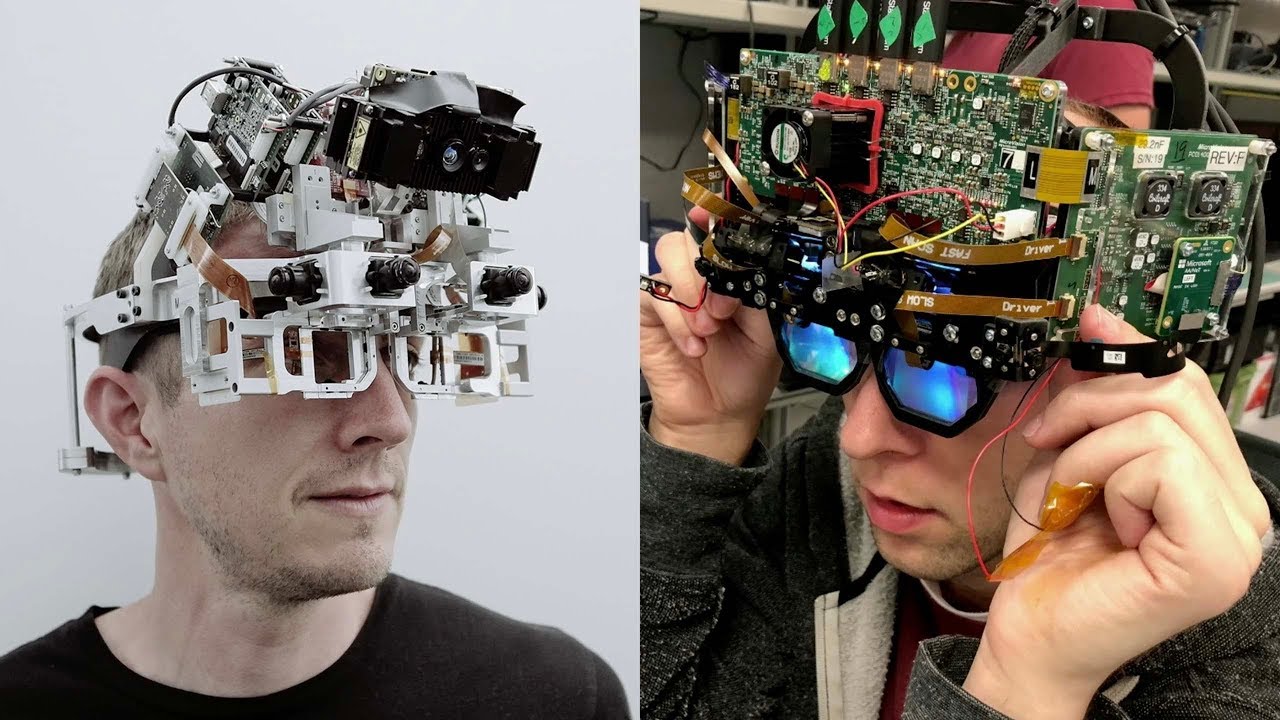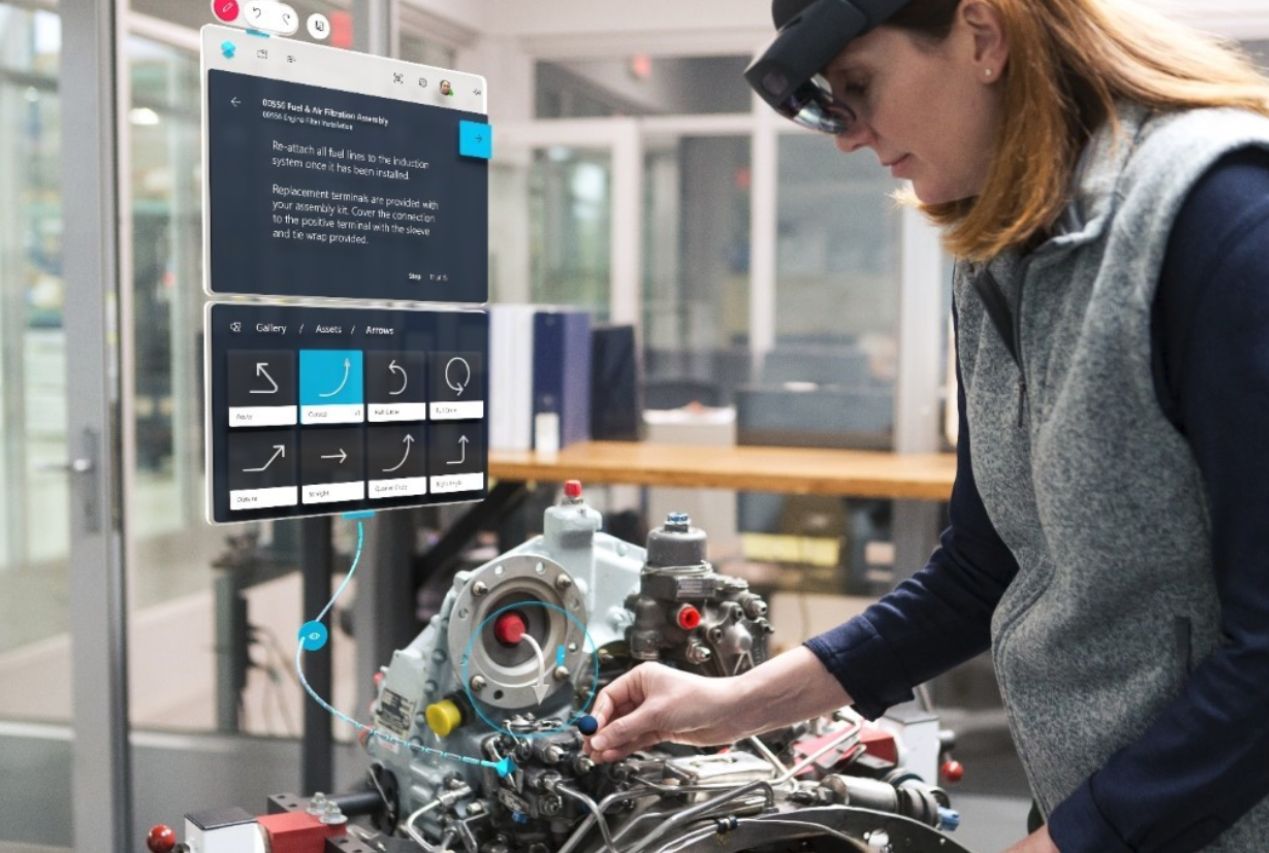Introduction
The Microsoft HoloLens is a groundbreaking mixed reality headset that has captivated the imagination of tech enthusiasts and industry professionals alike. With its advanced hardware and innovative design, the HoloLens offers users a unique and immersive augmented reality experience.
In this article, we will explore the intricacies of the HoloLens hardware and delve into the various components that make it tick. From the powerful Holographic Processing Unit (HPU) to the cutting-edge optics and display, each element of the HoloLens contributes to its remarkable functionality.
In addition, we will examine the sensors and tracking technology that enable the HoloLens to understand its surroundings and accurately map virtual objects onto the real world. We will also delve into the audio capabilities of the device, including its spatial sound technology that enhances the immersive experience.
Battery life and power management, as well as connectivity and user interface, will also be discussed to provide a comprehensive understanding of the HoloLens hardware. By the end of this article, you will have a clearer picture of the technology that drives the HoloLens and enables its groundbreaking augmented reality experiences.
So let us embark on this journey to uncover the intricacies of the HoloLens hardware and discover how it brings virtual objects to life in the real world.
Overview of the HoloLens Hardware
The HoloLens is a marvel of engineering, combining cutting-edge technology and sleek design to create a seamless augmented reality experience. At its core, the HoloLens is powered by a range of hardware components that work together in harmony to deliver stunning visuals, precise tracking, and immersive audio.
The centerpiece of the HoloLens hardware is the Holographic Processing Unit (HPU). This custom-designed chip handles the complex computational tasks required to process and render holographic content in real-time. With its powerful GPU and dedicated hardware accelerators, the HPU ensures smooth and seamless interactions with virtual objects.
When it comes to visuals, the HoloLens boasts impressive optics and display technology. The device features a high-resolution see-through display that seamlessly blends virtual content with the real-world environment. This display offers a wide field of view, allowing users to see holograms from a variety of angles and perspectives.
To accurately track the user’s movements and the position of virtual objects, the HoloLens employs an array of sensors and tracking technology. These include an inertial measurement unit (IMU), which measures the device’s orientation and movement in 3D space, as well as a depth sensor and a four-camera system that enables spatial mapping and gesture recognition.
The HoloLens also excels in audio capabilities, providing users with a truly immersive soundscape. The device features built-in speakers that deliver spatial sound, creating a sense of depth and directionality for virtual audio content. This spatial sound technology enhances the overall immersive experience and adds an extra layer of realism to augmented reality applications.
To keep the HoloLens running, it relies on a built-in battery that provides hours of usage on a single charge. The device also incorporates power management features to optimize battery life, allowing users to enjoy extended sessions without interruption.
In terms of connectivity, the HoloLens supports Wi-Fi and Bluetooth, enabling users to connect to the internet, other devices, and accessories. It also includes a range of input options, including voice commands, gestures, and a clicker, which serves as a handheld controller for interacting with holograms.
Overall, the HoloLens hardware is a testament to Microsoft’s commitment to pushing the boundaries of augmented reality technology. With precise tracking, stunning visuals, immersive audio, and seamless connectivity, the HoloLens offers an unparalleled augmented reality experience that is as practical as it is awe-inspiring.
Holographic Processing Unit (HPU)
At the heart of the HoloLens hardware lies the Holographic Processing Unit (HPU), a custom-designed chip that plays a pivotal role in delivering the immersive augmented reality experience. The HPU is responsible for processing and rendering holographic content in real-time, ensuring smooth interactions with virtual objects.
The HPU combines a powerful GPU (Graphics Processing Unit) with dedicated hardware accelerators, enabling it to handle the complex computational tasks required for augmented reality applications. This includes tasks such as spatial mapping, gesture recognition, object tracking, and spatial sound processing.
One of the key features of the HPU is its ability to perform simultaneous localization and mapping (SLAM), a technique that allows the device to understand and map its surroundings in real-time. This enables the HoloLens to accurately place virtual objects within the user’s physical environment, creating a seamless blending of the virtual and real world.
Another important aspect of the HPU is its role in managing the holographic frame rate. The HoloLens needs to synchronously update virtual objects based on the user’s movements, and the HPU ensures that these updates occur smoothly and without any noticeable lag. It handles the complex computations required to update holograms at a rate that matches the user’s perception, providing a seamless and immersive experience.
The HPU’s powerful graphics capabilities also contribute to the HoloLens’ stunning visuals. It can render high-resolution holograms with realistic lighting and shading, creating a sense of depth and realism. This allows virtual objects to seamlessly integrate with the real-world environment, enhancing the immersive experience for users.
In addition to its computational power, the HPU also incorporates dedicated hardware for handling spatial sound processing. This enables the HoloLens to deliver rich and immersive audio experiences by providing accurate spatial positioning of virtual sound sources in relation to the user’s physical surroundings.
Microsoft’s HPU is a remarkable piece of hardware engineering that elevates the HoloLens to new heights. Its powerful GPU, dedicated hardware accelerators, and advanced capabilities in simultaneous localization and mapping (SLAM), holographic frame rate management, and spatial sound processing make it a key component in delivering the seamless augmented reality experience that the HoloLens offers.
With the HPU driving the HoloLens’ advanced computational capabilities, users can engage with holograms in real time, interact with virtual objects in meaningful ways, and experience a whole new dimension of mixed reality interactions.
Deep Dive into Optics and Display
The HoloLens hardware incorporates advanced optics and display technology that are essential for delivering a seamless augmented reality experience. These components work together to seamlessly blend virtual content with the real-world environment, allowing users to interact with holograms as if they were physically present.
One of the key features of the HoloLens is its high-resolution see-through display. This display allows users to view holograms while still being able to see and navigate the real world. The display uses waveguides and diffractive optical elements to redirect light and project it directly onto the user’s eyes, creating the illusion of holograms floating in the user’s surroundings.
The HoloLens display also boasts a wide field of view, enabling users to see holograms from a variety of angles and perspectives. With a field of view of around 35 degrees, the HoloLens provides a more immersive experience compared to other augmented reality devices on the market.
In terms of image quality, the HoloLens prioritizes clarity and fidelity. The display produces bright and vibrant colors, allowing holograms to appear vivid and realistic. Additionally, the display has a high pixel density, ensuring that holographic content appears sharp and detailed.
To ensure accurate rendering of holographic content, the HoloLens incorporates sensors and tracking technology that are tightly integrated with the optics and display. These sensors gather information about the user’s position and orientation, allowing the device to align virtual objects precisely within the user’s physical surroundings.
One notable sensor is the depth sensor, which uses infrared lasers and a camera to measure the distances to objects in the environment. This enables the HoloLens to create a depth map of the surroundings, which is crucial for accurately placing holograms in physical space.
The combination of advanced optics, a high-resolution display, and sophisticated tracking technology allows the HoloLens to create a cohesive augmented reality experience. Users can interact with virtual objects that appear to be seamlessly integrated into their real-world environment, providing a level of immersion and interactivity that was once only imaginable in science fiction.
Microsoft’s commitment to perfecting the optics and display technology in the HoloLens has paved the way for a new era of mixed reality experiences. With its wide field of view, high-resolution display, and precise tracking capabilities, the HoloLens sets the standard for what is possible in augmented reality hardware.
Sensors and Tracking Technology
The HoloLens utilizes a range of sensors and tracking technology to understand the user’s movements and accurately map virtual objects onto the real world. These sensors work in tandem to create a seamless augmented reality experience that responds to the user’s interactions in real time.
One of the key sensors in the HoloLens is the inertial measurement unit (IMU). The IMU consists of a combination of accelerometers, gyroscopes, and magnetometers, which work together to measure the device’s orientation and movement in 3D space. This allows the HoloLens to track the user’s head movements and adjust the placement of holograms accordingly.
In addition to the IMU, the HoloLens incorporates a depth sensor and a four-camera system that enables detailed spatial mapping and gesture recognition. The depth sensor uses infrared lasers and a camera to measure the distances to objects in the environment, allowing the HoloLens to create a point cloud representation of the physical space. This information is then used to accurately place virtual objects in the user’s surroundings.
The four-camera system in the HoloLens is strategically placed to capture the user’s environment from different angles. These cameras work together to provide a comprehensive view of the surroundings, enabling the device to track the user’s movements and gestures. This allows for intuitive interactions with holograms, such as gesture-based controls or even hand gestures that can be recognized and translated into meaningful actions.
Furthermore, the HoloLens incorporates a microphone array, which enables voice commands and speech recognition. This feature allows users to interact with holograms using natural language, enhancing the overall user experience and making interactions with virtual objects more intuitive.
All of these sensors and tracking technologies contribute to the HoloLens’ ability to understand the user’s physical environment and accurately place virtual objects within it. This level of spatial awareness and real-time tracking is crucial for creating the illusion of holograms seamlessly blending with the real world, providing a truly immersive augmented reality experience.
Microsoft’s investments in sensor technology and advanced tracking algorithms have resulted in a highly sophisticated tracking system for the HoloLens. By combining the data from multiple sensors, the device creates a detailed understanding of the user’s surroundings, enabling precise interactions with holograms and a seamless merging of the virtual and physical worlds.
Audio and Spatial Sound Capabilities
The HoloLens is not just about stunning visuals and precise tracking; it also offers an immersive audio experience that further enhances the augmented reality journey. The device incorporates advanced audio technology to create spatial sound and deliver realistic audio cues, ensuring a truly immersive and interactive experience for users.
One of the standout features of the HoloLens is its spatial sound capabilities. The device utilizes built-in speakers that deliver audio in a way that creates a sense of depth and directionality. This spatial sound technology enables users to hear virtual audio content as if it is coming from specific locations within their physical environment.
Through a combination of advanced algorithms and the device’s sensors, the HoloLens can accurately position virtual sound sources in relation to the user’s physical surroundings. This means that if a hologram appears to be behind the user, the audio will also be heard as if it’s coming from behind, creating a more realistic and immersive experience.
Furthermore, the HoloLens supports spatial sound processing, which enhances the depth and realism of the audio experience. This technology takes into account the user’s position and head movements, adjusting the audio accordingly to provide a more natural and immersive listening experience.
In addition to spatial sound, the HoloLens also supports high-quality audio playback. The built-in speakers deliver rich and clear audio, ensuring that sound effects, music, and voice prompts are delivered with fidelity and impact.
The combination of spatial sound and high-quality audio playback allows for a more engaging and realistic augmented reality experience. Whether it’s the sound of virtual objects interacting with the physical environment or the immersive audio cues in a mixed reality game, the HoloLens’ audio capabilities play a vital role in creating a fully immersive, multi-sensory experience.
Microsoft’s attention to detail in audio technology ensures that users are not only visually immersed in the holographic experience but also enveloped by realistic and spatially accurate sound. This comprehensive audio integration further blurs the line between the virtual and real worlds, elevating the augmented reality experience to new levels.
Batteries and Power Management
The HoloLens is a powerful augmented reality device that requires a reliable and efficient power source to deliver a seamless user experience. To ensure uninterrupted usage, the device incorporates a built-in battery and intelligent power management features.
The HoloLens is powered by a rechargeable lithium-ion battery, which provides the necessary energy to run all the hardware components and support the various computational tasks involved in augmented reality processing. The battery is designed to provide several hours of usage on a single charge, allowing users to engage with holograms without constant interruptions or concerns about running out of power.
Efficient power management is a critical aspect of the HoloLens design. The device incorporates intelligent power management features that optimize battery life to ensure longer usage. These features involve dynamically adjusting power consumption based on user interactions, system resources, and display brightness.
For example, when the device is inactive or not being used for augmented reality applications, it intelligently goes into a low-power state to conserve energy. Additionally, power usage is optimized by dynamically adjusting the power draw of different hardware components based on their level of activity.
The HoloLens also employs power management techniques specific to the display, such as adjusting the brightness and refresh rates, to optimize power consumption without compromising the quality of the augmented reality experience.
In terms of charging, the HoloLens comes with a charger and a USB-C cable for easy and convenient recharging. The charger is designed to provide a fast and efficient charging experience, minimizing downtime between usage sessions.
Overall, the HoloLens’s battery and power management system work in tandem to ensure that users can have extended augmented reality experiences without worrying about running out of power. This allows users to fully immerse themselves in holographic content and explore the possibilities of mixed reality.
Microsoft’s focus on efficient power management and a reliable battery source underscores their commitment to creating a user-friendly and immersive augmented reality device. By optimizing battery life and incorporating intelligent power management features, the HoloLens provides users with a seamless and uninterrupted augmented reality experience.
Connectivity and Ports
The HoloLens isn’t just a standalone device; it also offers connectivity options that allow users to expand their augmented reality experience and connect with other devices and accessories. The device incorporates various connectivity features and ports to ensure seamless integration with the broader technological ecosystem.
One of the key connectivity options on the HoloLens is Wi-Fi. It supports both 2.4GHz and 5GHz Wi-Fi frequencies, providing users with fast and reliable wireless connectivity. This allows for seamless internet access, enabling users to download apps, stream content, and access online resources while using the HoloLens.
In addition to Wi-Fi, the HoloLens also supports Bluetooth technology, enabling users to connect the device to other devices and peripherals. Bluetooth connectivity allows for the pairing of accessories such as keyboards, mice, game controllers, and even other wearable devices.
The HoloLens also features a number of ports to accommodate various connectivity needs. One such port is the USB-C port, which serves as the primary charging and data transfer port. The USB-C port allows users to connect the HoloLens to their computer or other devices for data transfer and charging purposes.
The HoloLens also includes a 3.5mm audio jack for audio connectivity. This enables users to connect headphones or external speakers for a more personalized audio experience, especially in scenarios where privacy or enhanced audio quality is desired.
Furthermore, the HoloLens is equipped with built-in cameras that can capture photos and videos. These cameras allow users to capture images and record videos of their augmented reality experiences. Users can transfer these media files to other devices using the HoloLens’ connectivity options, such as Wi-Fi or the USB-C port.
Overall, the connectivity capabilities and ports on the HoloLens provide users with flexibility and versatility in integrating the device with their existing technology ecosystem. Whether it’s wireless internet access, Bluetooth connectivity, data transfer, or audio input/output, the HoloLens offers a range of options to connect seamlessly with other devices and accessories.
Microsoft’s focus on connectivity ensures that users can easily integrate the HoloLens within their daily digital workflows and leverage the device’s augmented reality capabilities in conjunction with other devices and peripherals.
User Interface and Controls
The HoloLens offers a unique and intuitive user interface that allows users to interact with holographic content seamlessly. The device incorporates a combination of voice commands, gestures, and a handheld clicker to provide users with a range of control options that enhance the augmented reality experience.
One of the primary ways to interact with the HoloLens is through voice commands. The device supports a wide range of voice commands, allowing users to control various aspects of the augmented reality experience. From launching apps and navigating menus to manipulating holograms and performing specific actions, voice commands provide a hands-free and natural way to interact with the device.
In addition to voice commands, the HoloLens also recognizes a variety of hand gestures. These gestures are used to interact with virtual objects and control the user interface. For example, users can perform air-tap gestures to select and interact with holograms or pinch gestures to resize and manipulate virtual objects. These gestures provide a tactile and immersive way to engage with the augmented reality environment.
Furthermore, the HoloLens includes a handheld clicker, which serves as a physical controller for augmented reality interactions. The clicker allows users to perform more precise actions, such as clicking, scrolling, and selecting objects. It can be used as a traditional handheld controller or worn on the finger for more nuanced interactions.
The combination of voice commands, gestures, and the clicker allows users to choose the control method that best suits their preference and the context of their augmented reality experience. Whether it’s a hands-free approach for certain tasks or a more tactile and precise control method, the HoloLens offers a range of options to enhance usability and accessibility.
The user interface on the HoloLens is intentionally designed to be non-intrusive and intuitive. The device’s interface elements, such as menus and windows, appear seamlessly integrated into the real-world environment, ensuring that users can easily navigate and interact with holographic content without being overwhelmed or disoriented.
Microsoft has put significant effort into designing an intuitive user interface and control system for the HoloLens. By combining voice commands, gestures, and a handheld clicker, users can interact with holographic content in a natural and immersive way, unlocking the full potential of augmented reality and creating a truly interactive and engaging experience.
Conclusion
The HoloLens hardware is a remarkable feat of engineering, pushing the boundaries of augmented reality technology and delivering a truly immersive experience. Its advanced components, such as the Holographic Processing Unit (HPU), optics and display, sensors and tracking technology, audio capabilities, batteries and power management, connectivity and ports, and intuitive user interface and controls, come together to create a seamless augmented reality experience.
The HPU drives the computational power required to render holographic content in real-time, while the advanced optics and display blend virtual objects seamlessly with the real world. Sensors and tracking technology enable accurate placement of virtual objects and precise tracking of the user’s movements, enhancing the realism of the augmented reality experience. The spatial sound capabilities provide immersive audio cues and a multi-dimensional auditory experience.
Efficient power management ensures long battery life for extended usage, while the Wi-Fi and Bluetooth connectivity options allow for seamless integration with other devices and accessories. The user interface and control methods, which include voice commands, hand gestures, and a handheld clicker, provide a range of intuitive and immersive ways to interact with holographic content.
The HoloLens hardware, with its cutting-edge technology and thoughtful design, sets the standard for what is possible in the realm of augmented reality. Microsoft’s dedication to refining and perfecting the hardware components ensures that users can enjoy a seamless, immersive, and interactive augmented reality experience.
As technology continues to advance, the future of augmented reality holds immense possibilities, and the HoloLens serves as a testament to the potential of this transformative technology. With its powerful hardware and innovative design, the HoloLens has opened the door to groundbreaking augmented reality experiences in a variety of fields, including gaming, education, healthcare, and more.
The HoloLens represents the convergence of the virtual and physical worlds, providing users with a new level of interactivity and immersion. It has the power to change the way we work, play, and interact with digital content, bringing us one step closer to a future where augmented reality becomes an integral part of our daily lives.







